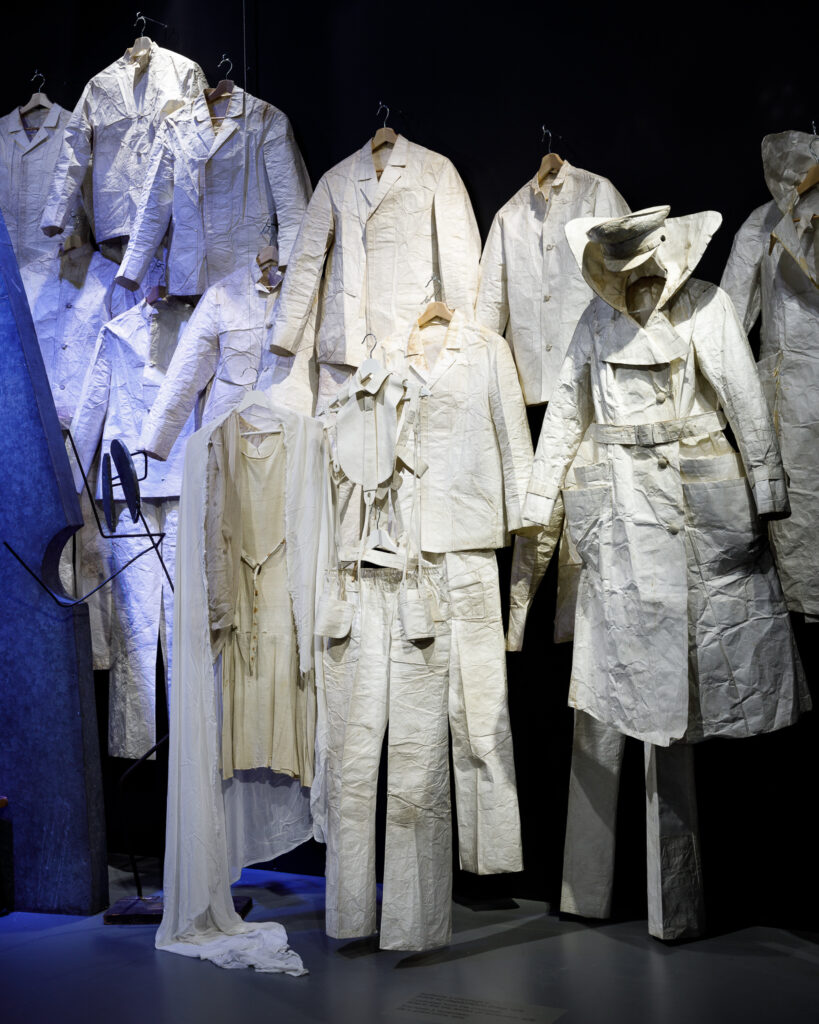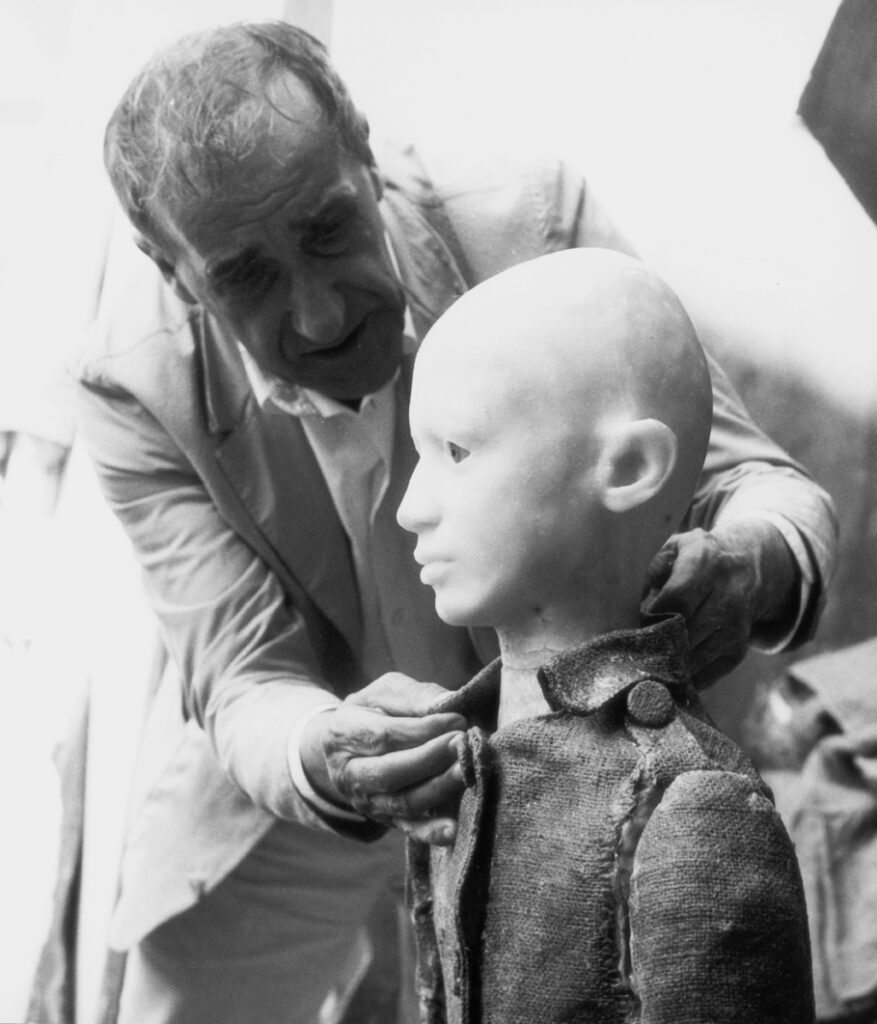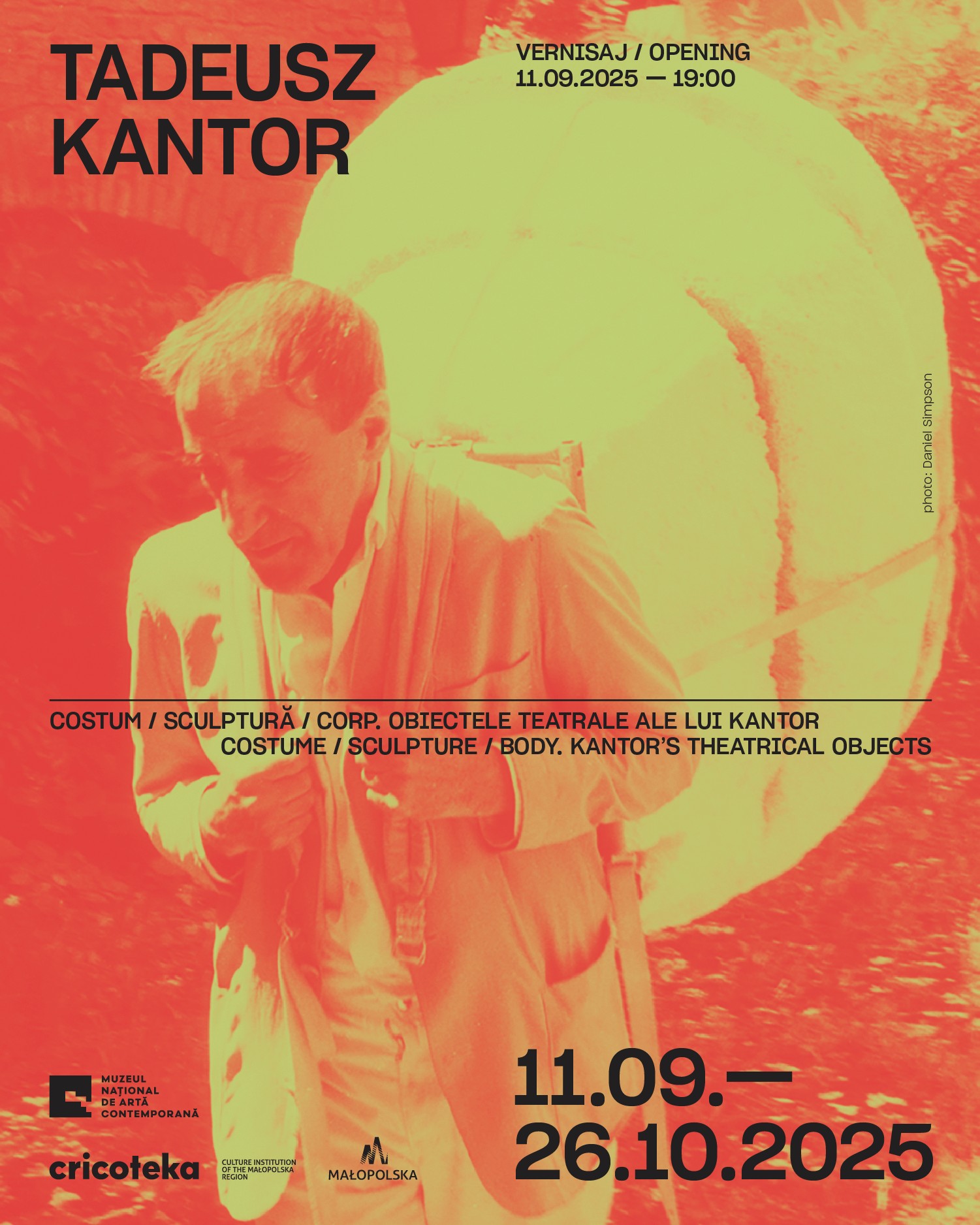A visionary. A total artist. A revolutionary of the theatre. The most international of Polish artists and the most Polish of international artists. One of the most prominent figures in 20th-century art, Tadeusz Kantor (1915—1990) was a revolutionary in every sense of the term. The Cricot 2 Theatre he founded kept transgressing the traditional boundaries of stage. Drawing from the Cricoteka collection, the exhibition hosted by the Brukenthal Museum in Sibiu and National Museum of Contemporary Art in Bucharest puts on display Tadeusz Kantor’s theatrical objects, costumes, props and sculptures, to build a picture of an exceptional figure. Containing traces of past performances, the exhibits also convey the idea behind the creative process and constitute a record of it.
dostępność
Brukenthal Museum, Sibiu
Data
21.06-31.08.2025
dostępność
National Museum of Contemporary Art, Bucharest
Data
11.09 - 26.10.2025

Curators: Justyna Droń, Bogdan Renczyński
Przekierowanie
Polski
Przekierowanie
Română
A visionary. A total artist. A revolutionary of the theatre. The most international of Polish artists and the most Polish of international artists. One of the most prominent figures in 20th-century art, Tadeusz Kantor (1915—1990) was a revolutionary in every sense of the term. The Cricot 2 Theatre he founded kept transgressing the traditional boundaries of stage. Drawing from the Cricoteka collection, the exhibition hosted by the Brukenthal Museum in Sibiu and National Museum of Contemporary Art in Bucharest puts on display Tadeusz Kantor’s theatrical objects, costumes, props and sculptures, to build a picture of an exceptional figure. Containing traces of past performances, the exhibits also convey the idea behind the creative process and constitute a record of it.
“These works did not arise from an immediate and passing need of a particular production. They are intimately linked with the ideas that define my work. […] Their inner tension and self-containedness are sufficient for them to be autonomous works of art.” – Tadeusz Kantor
The exhibition takes as its point of departure the idea of costumes as autonomous works of art with adequate tension, a biography and materiality of their own, while being at the same time an extension of space and the actor’s body. The weight of materiality in Kantor’s work is singular. The objects on stage are not just “rests” or “shreds,” as he often said, they also tell a story about the human condition, transience and presence. Theatrical objects and costumes have become sculptural forms, balancing on the border between body and space, idea and physicality, collective memory and individuality. Costumes, those losing their human form and those imitating it, transform into full-fledged works. These are peculiar body-sculptures which deserve to be seen as sculptures, at the same time being inextricably tied to the actor’s corporeality. Comprising intense images, metaphorical objects and living bodies, the stage matter has transformed into an area in which to experiment, and to contemplate transience, memory and death.
The objects to be seen at the exhibition illustrate the artist’s exceptional ability to create his own theatrical language: inimitable, deeply rooted in Polish history and the experience of the 20th century. They also show Kantor’s sensitivity to global artistic trends – Dadaism, Art Informel and Constructivism. A direct reference to Romanian culture is made by Kantor in his revision of materiality as he designed four costumes for a production of Rhinoceros (1961), based on Eugène Ionesco’s play, directed by Piotr Pawłowski for the Stary Theatre in Kraków. These multicoloured, visually rich costumes are accompanied by more personal projects – from those inspired by Witkacy, to costumes made of paper for the cricotage Where Are the Snows of Yesteryear, to installations from Kantor’s last productions in the Theatre of Death period: The Dead Class and Today is My Birthday. Included in the presentation are also objects that break away from the traditional idea of costume – an authorial reconstruction of Goplana from Balladyna or Underaged on a frame.
Intended to stimulate an interest in the history of Tadeusz Kantor’s theatre, the exhibition also retraces the ideas, influences and fascinations behind it. It provides an arena in which to reflect on his approach to building tension, to matter and form, and on his theatre metamorphosing into something that has come to exist beyond time – as a collection of art objects that keeps pulsating and reverberates to this day. It is there – between active imagination and the body – that Kantor’s theatre is born: a visionary synthesis of form, emotion and space. A theatre that does not end once the stage is empty, but goes on – within matter, memory, the imagination of future generations.
Curators: Justyna Droń, Bogdan Renczyński
Curator of the accompanying programme: Aldona Mikulska
Co-financed from the funds of the Ministry of Culture and National Heritage of the Republic of Poland.
Partners:
Ministry of Culture and National Heritage Republic of Poland
Brukenthal National Museum
National Museum of Contemporary Art Bucharest
Sibiu International Theatre Festival
National Theatre Festival Bucharest
Adam Mickiewicz Institute
Polish Institute Bucharest
Romanian Institute Warsaw
Muzeul Național De Artă Contemporan
Media: Scena.ro, TVP3 Krakow, Radio Krakow, Radio Krakow Kultura, Niezla Sztuka
Curators
Justyna Droń, Bogdan Renczyński
Coordination
Justyna Droń, Aldona Mikulska, Alexandra Runcan
Translations
Sabra Daici, Monika Ujma
Accompanying programme
Aldona Mikulska
Lighting
Mariusz Gąsior
Graphic design
Łukasz Dziedzic
Promotion
Emilia Hasmațuchi, Małgorzata Kmita-Fugiel, Zofia Mikołajska, Andrea Nikolov
Cooperation
Anna Róża Burzyńska, Marta Bryś, Katarzyna Fazan, Joanna Geroch, Joanna Gorzałczany, Magdalena Link-Lenczowska, Kateryna Marchenko, Ioana Nistorescu, Agnieszka Oprządek, Małgorzata Paluch-Cybulska, Tomek Pietrucha, Paweł Rutkowski, Luna Sawka, Raluca Teodorescu, Natalia Zarzecka
Co-financed from the funds of the Ministry of Culture and National Heritage of the Republic of Poland.
The partners of the event are the Adam Mickiewicz Institute and the Ministry of Culture and National Heritage of the Republic of Poland – the organizers of the Poland–Romania Cultural Season 2024–2025.
The honorary patronage of “110/70/50/35 – Tadeusz Kantor’s Jubilee Year” has been taken on by the Minister of Culture and National Heritage.
Co-financed by the Minister of Culture and National Heritage from the Culture Promotion




